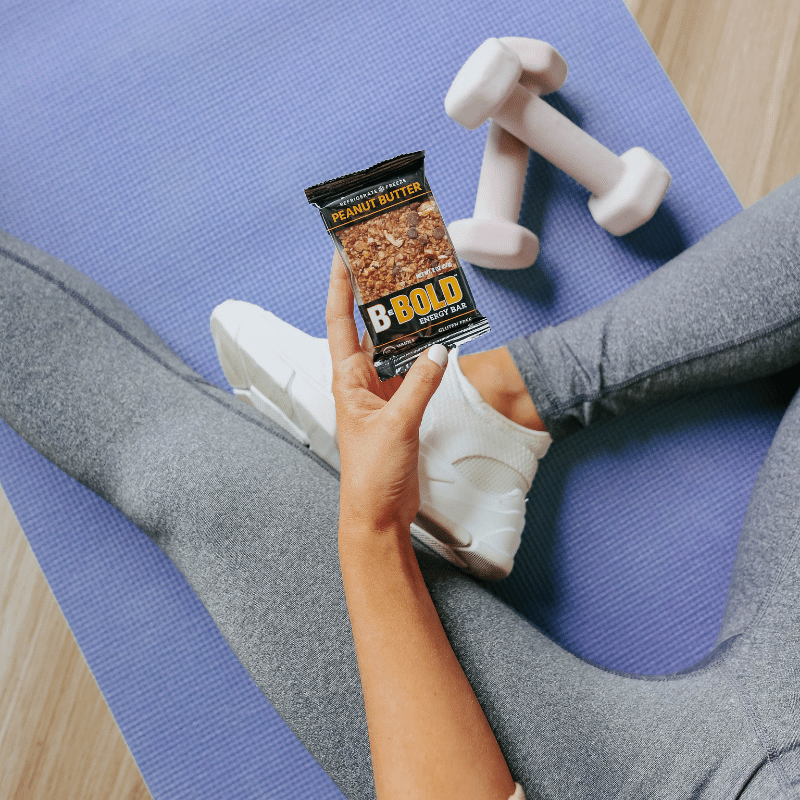Whether or not you need to eat while exercising (and how much) depends on the duration and intensity of your workout. Eating during exercise can be tricky, especially if you’re prone to digestive issues, but in many cases consuming food (or a beverage that contains carbohydrates) can not only help you avoid ‘bonking,’ but can also take your training to the next level.
When do I need to eat during exercise?
The general ‘rule’ is that you should consume carbohydrates (from food, drink, or a combination of both) when you’re exercising for 90 minutes or longer. Of course there are exceptions like low-intensity exercise such as a 90-minute yoga class or a leisurely walk. But for most other exercises — running, biking, swimming laps, a high-intensity hike, or any other type of intense training — fueling up mid-workout can enhance your performance and promote better recovery.
What should I eat to enhance my performance?
Quickly digested carbohydrates are key as that is what your muscles use for energy — and you want it to be available to your body to use as fast as possible. The Academy of Nutrition and Dietetics and the American College of Sports Medicine recommend 30 to 60 grams of carbs per hour for exercise over 90 minutes, which you should start consuming around 45 minutes into your workout. The exact amount depends on your gender, size, workout intensity, and other individual characteristics, so you’ll want to test out different amounts to see what works best for you. This could look like:
- Sports gels or chews
- Sports drinks with carbohydrates
- Honey packets
- Dates, raisins, or other dried fruit
- Pretzels or low-fiber crackers
- Low-fiber cereal
- Banana
In general, it’s best to limit protein, fiber and fat as these nutrients slow digestion and not only make it more difficult for your body to access the energy it needs, but also can lead to digestive upset.
However, if you’re out for a longer session (over 2.5-3 hours) such as a half or full-day hike or bike ride and you’re missing a meal, you will want to consider fueling up with something a little more substantial. This is where some protein, fiber and fat can come in handy to give you consistent, steady energy throughout your workout (but don’t skimp on the carbs!). For these longer sessions, try:
- BeBOLD bars
- Trail mix
- Nut butter and jelly or honey sandwich
- Nut butter stuffed dates
What if food doesn’t agree with me?
Digestive upset is one of the biggest reasons people don’t eat enough during longer exercise sessions. The good news is that you can train your gut to accept fuel — it just takes practice and a little patience. Start with small amounts of easily digested carbohydrates and try it out on a shorter training session or one that isn’t essential to your training plan (if you’re training for a race). You may need to try out different types of fuel to see what works best for you. Slowly add more fuel as your body learns to accept and digest the fuel while exercising until you get to an optimal amount for you.
What if I’m not hungry or don’t feel like eating?
For many, exercise is an appetite suppressant since your body is prioritizing your muscles and blood flow to the digestive system is reduced during exercise. However, just because you’re not hungry doesn’t mean you don’t need fuel! In fact, if you wait until you feel hungry, it’s likely too late. Signs you need fuel on your workout include not being able to complete a workout you feel is appropriate for you, feeling like your muscles just can’t do anymore, feeling light-headed or irritable during exercise or experiencing poor recovery and extreme fatigue in the hours or days after a longer workout.
What and how much to eat during exercise can be very individualized, so if you’re struggling to find something that works for you, reach out to a registered dietitian who specializes in sports nutrition for help.
Sarah Gold Anzlovar, MS, RDN, LDN is a registered dietitian and the owner of Sarah Gold Nutrition, a virtual private practice and nutrition communications consulting business in the suburbs of Boston. She is also a runner, triathlete, and indoor cycling instructor and has helped dozens of athletes enhance their training with proper fueling.

